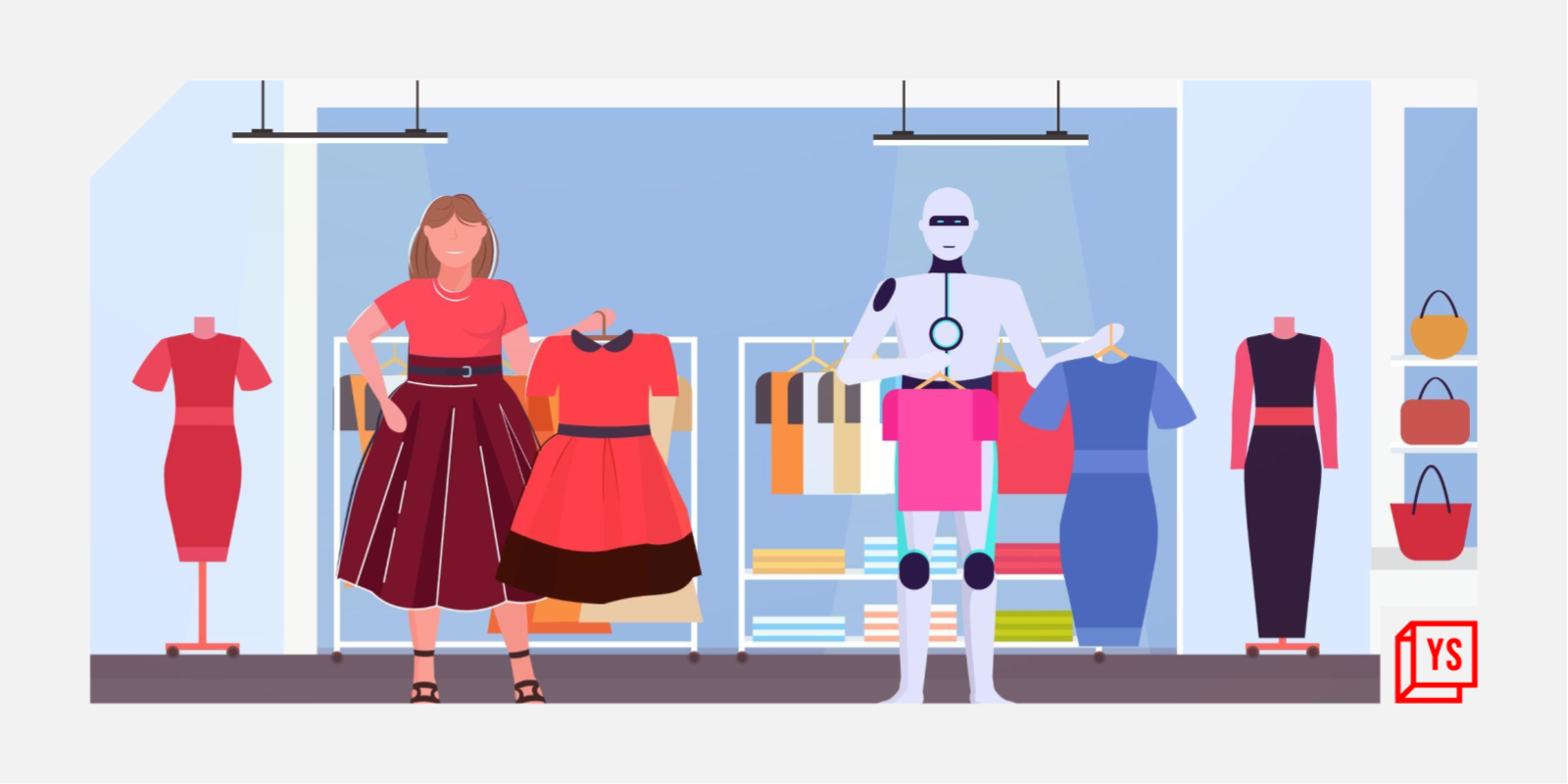
Fashion aficionados understand the monumental challenge of updating the closets with fleeting trends. However, it can be challenging for both the shopper and retailer to achieve the right fit. It is also environmentally detrimental with the majority of returned clothing eventually ending up in landfills.
The rapidly evolving sphere of Artificial Intelligence is deeply integrated into various sectors with the fashion industry being one of them. While the industry has dabbled in basic AI and frontier technologies like NFTs, metaverse, digital IDs, and augmented/virtual reality, the potential of generative AI still needs to be explored.
Although nascent and fraught with glitches, McKinsey’s analysis predicts a conservative addition of $150 billion, potentially reaching up to $275 billion in operating profits for the apparel, fashion, and luxury sectors in the next three to five years.
In terms of the Indian Fashion Industry, predictions indicate a robust 16.32% annual growth (CAGR 2022-2027) anticipated to soar to $39.42 billion by 2027.
However, reshaping this intricate business model isn’t as easy as a pie. Here are 5 compelling ways AI redefines the fashion industry. Read along!

Boost in fashion shows and virtual marketing campaigns
Marketing executives and agencies are tapping into generative AI to ideate campaign strategies, curate product campaign content, and even fashion virtual avatars to boost the intricate process of marketing.
McKinsey’s 2019 Apparel CPO Survey predicted a significant reduction in the use of physical samples by 2025, with 83% of respondents anticipating a shift towards virtual samples under the influence of AI. This led to the hosting of virtual fashion shows by several high-end luxury brands.
For instance, Moschino hosted a ‘doll fashion show,’ showcasing miniature garments on marionette dolls, thereby preventing the wastage of resources that a traditional runway would require.
Quite akin to its traditional counterpart, virtual merchandising fosters brand identity and storytelling, and optimises consumer engagement while decoding their behavioural patterns.
By leveraging visual merchandising in the digital realm, companies can strategically present exclusive products to specific user segments. The integration of design elements into a brand’s digital storefront significantly nurtures the relationship between brand and consumer, a crucial element of customer acquisition.
Opens newer avenues for personalisation
Generative AI presents a vast opportunity for personalised customer communications, a strategy that has proven to be a revenue booster. According to McKinsey, companies excelling at personalisation can witness a staggering 40% increase in revenues compared to those neglecting this strategy.
Several startups such as Writesonic, CopyAI, and Jasper AI are making strides in this domain by implementing AI. These tools help a marketer by allowing them to select the content type—be it a blog post, an email, or other formats—while inputting specific prompts to articulate their requirements. Parameters like the targeted audience, desired tone, and brand alignment are included, allowing the AI to generate multiple options for the marketer’s selection.
They have proved effective in enhancing lower-funnel marketing channels, primarily focused on driving sales conversions, as opposed to more strategic brand-building communications.
However, marketers still retain an essential role in guiding and refining the AI-generated content, shaping and aligning it with the brand’s voice and messaging.
Streamlines designing
AI significantly boosts the design process in the fashion industry.
Staying ahead of trends and understanding customer preferences for upcoming trends is a constant challenge. Machine learning technologies leverage vast image datasets, enabling the detection of trends in an incredibly precise manner beyond human capacity. Fashion brands use this data as a source of inspiration for outfit designs.
A notable application of AI in fashion designing is showcased in Tommy Hilfiger’s ‘Reimagine Retail’ project. FIT students utilised an AI-based tool and an extensive archive of Tommy Hilfiger runway and product images to generate multiple designs, incorporating colours, patterns, and styles curated by AI. This project vividly demonstrated how AI helps designers foresee trends and enhance the design process.
Designers like Almossawi also integrate AI into their creative process for inspiration and idea generation. He emphasises how AI complements traditional collaboration by extending it to human-machine collaboration, ushering in a new era of creativity.
.thumbnailWrapper
width:6.62rem !important;
.alsoReadTitleImage
min-width: 81px !important;
min-height: 81px !important;
.alsoReadMainTitleText
font-size: 14px !important;
line-height: 20px !important;
.alsoReadHeadText
font-size: 24px !important;
line-height: 20px !important;

Supports sustainability through effortless supply chain optimisation
In the world of fashion, ‘green’ has rightly stolen the limelight from black, as the industry is responsible for up to 8% of global greenhouse gas emissions producing around 9% of the annual microplastics found in our oceans (according to the report by UN Alliance for Sustainable Fashion).
Supply chain optimisation stands as one of the most intricate and challenging facets of the fashion industry. From sourcing raw materials to inventory management and efficient delivery, every stage has its challenges. However, AI has emerged as a pivotal force in reshaping and refining these processes, fundamentally transforming fashion industry operations.
AI-powered algorithms delve into sales history, weather patterns, and inventory levels to precisely predict demand, facilitating improved inventory management. This predictive capability aids in preventing overproduction—a major issue in the fashion world that causes environmental degradation. By aligning production with anticipated demand, fashion brands curtail waste, fostering sustainability.
Advanced systems adeptly track and analyse shipping data, optimising product deliveries for maximum efficiency. This not only saves time but also mitigates carbon footprint, steering the supply chain towards sustainability.
A compelling illustration of AI-driven supply chain optimisation is witnessed in Li & Fung, a global supply chain manager. Their innovative digital supply chain platform, infused with AI capabilities, seamlessly connects retailers with suppliers in real-time, offering comprehensive visibility and agility, thereby enhancing supply chain efficiency.
Additionally, brands like H&M leverage AI to scrutinise store receipts and returns, enabling them to adjust the quantities of each garment per store. Such data analysis diminishes the risk of unsold stock, trimming costs alongside flagging sustainable practices.
For the rental space
Rental fashion platforms have embraced AI in their warehouses, a synergy that’s reshaping sustainability.
Robots seamlessly identify materials and cleaning methods for returned garments and swiftly sort them to replenish inventory. Amazing, isn’t it?
These automated systems minimise processing time, fostering a sustainable clothing rental cycle that significantly reduces waste, making strides toward environmental conservation.
Is AI in fashion a boon or bane? The truth is, it’s a blend of both. AI holds the power to redefine the fashion industry while simultaneously introducing new challenges for businesses to navigate. Yet, like any technology, the advantages and disadvantages of AI in fashion depend on one’s perspective. With a strategic approach, businesses can harness AI to fuel growth and enhance their overall performance.










